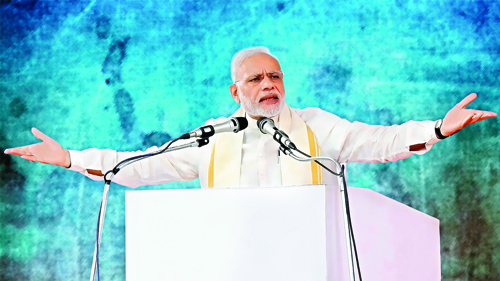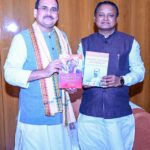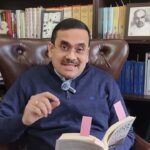Tracing history in 2017
- By : Anirban Ganguly
- Category : Articles

The year 2017 promises to be interesting in terms of historical evaluations. As Prime Minister Modi pointed out in his address to the nation on New Year’s Eve, 2017 is the centenary year of the Champaran Satyagraha – a movement that forever altered our approach to the struggle for freedom. In response to the plight of the villagers and farmers of the area, the Mahatma initiated a movement that began redirecting our march towards freedom. Dr Rajendra Prasad emerged as a national leader from the Champaran furnace, as did Sardar Patel, a year later from the fire of Kheda Satyagraha. Both leaders were to play epochal roles in the Indian freedom struggle and also made decisive contributions to shaping and nurturing post-Independence India’s polity. The Champaran Satyagraha irreversibly linked mass aspirations to the political demand for emancipation and recognised, for the first time, that freedom, to be comprehensive, deep-rooted, and all-pervasive had to include in its articulation the dimension of mass aspiration which yearned to be liberated from the clutches of exploitation. Read This – Beyond politicisation of rape That their political family deliberately marginalised both Patel and Prasad in later years is a separate discussion that entails an examination of dynasticism, nepotistic political tendencies, and the overwhelming presence and effect of the “l’état c’est moi” syndrome among the leading lights of the Congress’s first family since the early decades of Independence. Read This – Visions of a modern minister This year also marks the centenary of the October Revolution, which spoke of liberating the masses and the working classes from exploitation and of creating a system that would espouse equality and equal opportunities. Never was such a massive hoax perpetrated on the collective psyche of humanity, a hoax that has left permanent gashes on the deep inners of humankind’s consciousness. The October Revolution and its aftermath – the evolution of the communist system and its worldview spawned some of the most regressive, violently exploitative, and murderous regimes the world has ever seen. These were regimes that oppressed and liquidated millions of people – all in the name of a perpetual revolution that aimed to terminate exploitations of all kinds. So delusional was this black-philosophy, so rapacious and diabolic it rendered its leaders that they ruthlessly carried out fancy political experiments which consigned to death millions of their compatriots. Stalin’s Gulags, Mao’s famines and Pol Pot’s killing fields were some of those satanic expressions that came down to us as a result of that Revolution and its “revolutionary” interpretation. For us in India, the October Revolution gradually gave birth to a strange and traitorous political class – the Indian communists. Since their inception, they have actually worked to undermine India, her sovereignty, her security and her well-being – all in the name of the “people.” This political class in India has no ideological allegiances and creates an illusion of working for the people and the downtrodden while indefatigably preventing and opposing any attempt actually to alleviate the suffering of these sections and to truly empower them. This political class secretly harbours ambitions to overthrow the democratic state in India through an armed struggle while paying lip-service to democracy and the parliamentary system. It was this secret urge which saw them oppose India’s freedom and carry out an armed struggle against the newly Independent Indian state and also give birth to Charu’s eight points that consumed an entire generation in the death flames of a false revolution. A hundred years after the Revolution, however, this political class and system has been nearly wiped out and rejected across the world and in areas where it still survives – as in China – it has forsaken for good the founding ideals and objectives of the Revolution itself. In India, however, despite severe and continuous depletion in their ranks, that political class – the Indian communists – continue to survive, to hold out, to create havoc in the collective mind of the people and to do everything they can to undermine India’s forward march. Privately penetrated with capitalist and bourgeois habits and tendencies, leaders of this class, continue to try and fool the proletariat by arguing that the revolution in India still continues, has entered a decisive stage and has reached the threshold of success. It is from this class that the acutest and most acerbic hatred for Prime Minister Modi emanates. Modi is seen by them to be carrying out an actual revolution which would eventually see them staring at political liquidation, intellectual rejection and in the end at the deep and dark recesses of the dustbin of history! While being, of course, the 70th year of our Independence, 2017 also announces the 50th year of the Samyukta Vidhayak Dal (SVD) formations – a political phase that was inaugurated by the deft and visionary partnership of Ram Manohar Lohia and Pandit Deendayal Upadhyaya. In 1967, after two decades of domination – the Congress fortress began to crumble ceding space to alternate political narratives and their ideas of India, allowing thus, the emergence of a genuinely democratic polity. 50 years after that first crumble, the Congress today is in an advanced stage of tumble, it has lost the intellectual quotient; it has long forsaken the moral quotient and has given up on any pretences of having a vision for India. Leaderless and rudderless, and soaked in arrogance, it has lost itself. This year thus offers an interesting occasion for evaluations and assessments.

















